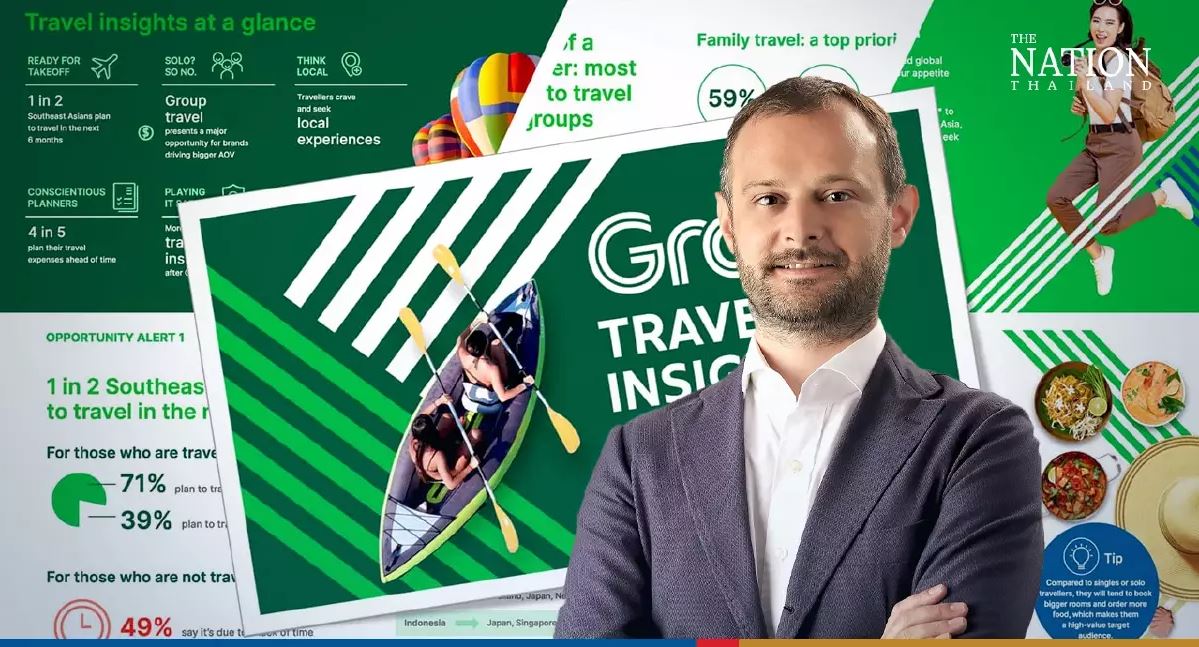Grab targets tourists with menu translations, experiences, and currency converter
Grab has unveiled new features aimed at boosting safe, seamless tourism with what it calls hyperlocal experiences as Southeast Asia enjoys a strong travel rebound.
The new features will be available by the middle of this year, said Russell Cohen, Grab’s group managing director of operations, during a media briefing on Monday.
He pointed out that travel and ride-hailing are showing signs of growth consistent with the tourism recovery.
According to Grab’s database, international tourist arrivals in Southeast Asia soared 1,706% in 2022 compared to the previous year of Covid lockdowns. Grab has also seen a steady rebound in traveller numbers, with rides to and from airports increasing threefold between January and December 2022.
Cohen said the figures demonstrate Grab’s potential to help lead Southeast Asia’s travel revival.
Travellers spend on average twice as much on transport per day compared to local users, he added.
“No one knows Southeast Asia like we do, and our goal is not only to deliver the safest and most seamless mobility experience, but also to encourage travellers to explore Southeast Asia’s richness like a local through our superapp offerings,” he said.
He explained that the upgraded Grab app will allow travellers to plan ahead, giving them a smooth ride once they arrive and the ability to experience their destination like a local.
He then demonstrated some of the new features added earlier this year, such as the Traveller Homepage, which helps international visitors plan their trips better by giving them the ability to explore a city within the Grab app.
The page is now available for 33 of Southeast Asia’s most popular tourist destinations, allowing users to explore the city’s Grab services, search and save places of interest such as their accommodation address and landmarks they intend to visit, and examine nearby food options.

The new features come in Chinese, Korean, and Japanese to serve their large markets of tourists visiting Thailand and other Southeast Asian countries.
Other upcoming features include translated menus, a revamped venues experience and a currency converter.
Cohen said that the translated menu service will be available in key cities throughout Thailand, Indonesia and Vietnam by the middle of this year.
The Venues feature, meanwhile, will assist travellers by locating the best pick-up and drop-off points at an unfamiliar airport. Venues is available at all major airports in Southeast Asia as well as over 4,000 locations throughout the region, including popular tourist attractions such as the Singapore Zoo, the floating market in Pattaya, and the National Monument in Jakarta.
Grab has partnered with other popular apps to provide international tourists with the option of accessing its ride-hailing services through platforms they are already familiar with.
WeChat, AliPay, Ctrip, Kakao T, and Booking.com allow users to access Grab’s ride-hailing services throughout Southeast Asia.
“They’ll be able to choose their pick-up and drop-off location, as well as view the full range of vehicle types available in their area, with the estimated fare displayed in their home currency. In those apps, they can also pay using their preferred payment method,” Cohen explained.
Uber users who open the app while in Southeast Asia will see a message directing them to Grab as Uber’s recommended mode of transport in the region.
According to Grab data, 43% of international travellers in Thailand using Grab are from other Southeast Asian countries. Outside of Southeast Asia, the top source markets for Grab users are North America, Australia, China, and South Korea.
Cohen said the continued recovery of tourism and the reopening of China will benefit Southeast Asia’s economy as a whole.
Grab claims to be Southeast Asia’s leading superapp, operating across the delivery, mobility, and digital financial services sectors. The company now serves over 500 cities in eight Southeast Asian countries: Cambodia, Indonesia, Malaysia, Myanmar, the Philippines, Singapore, Thailand, and Vietnam.
Source: https://www.nationthailand.com/business/corporate/40026745


 Thailand
Thailand




